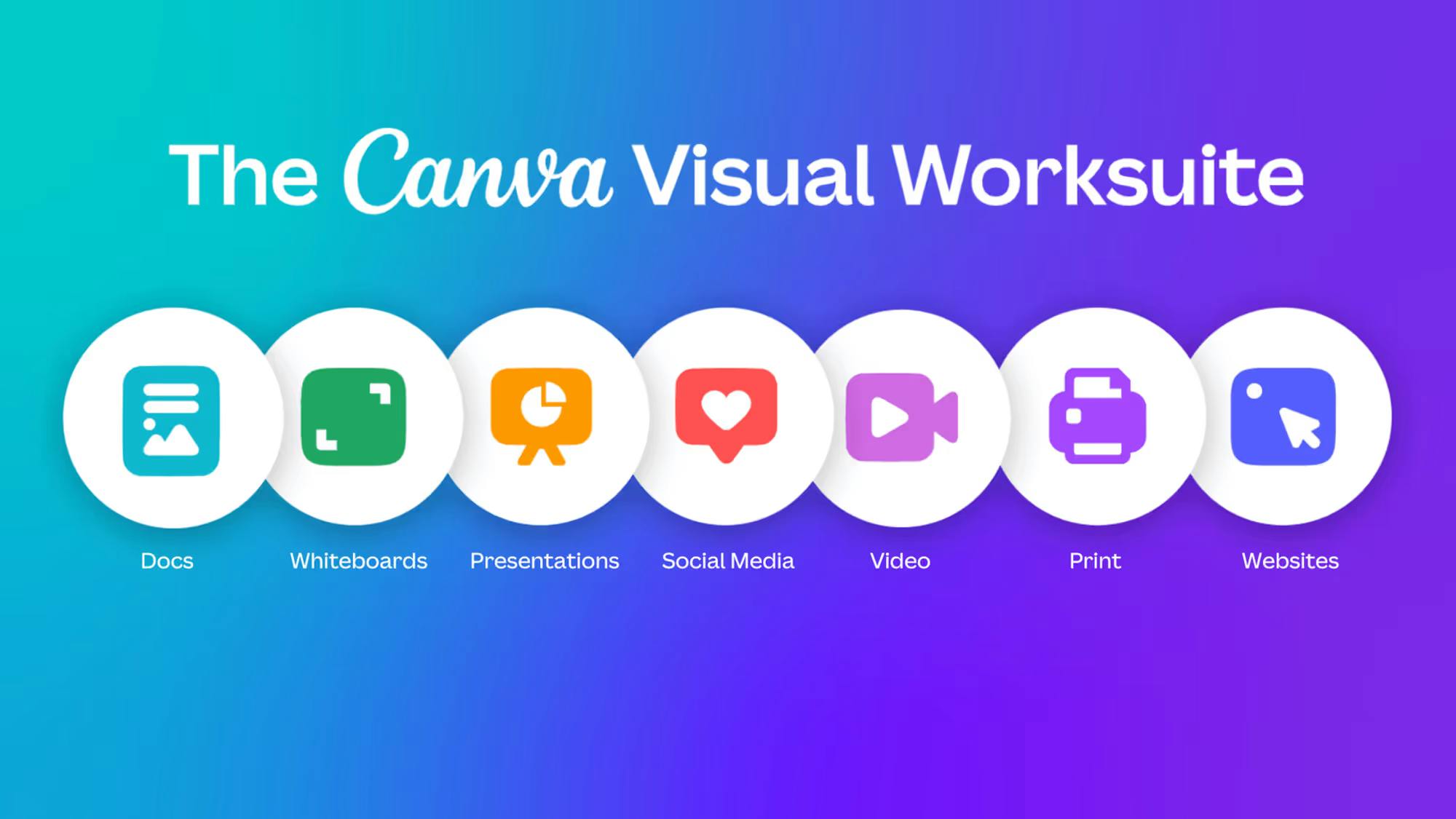Thesis
Businesses are taking notice of graphic design as a revenue driver, with 50% of businesses increasing design budgets from 2021 to 2022. Marked by the growing demand for graphic designers in 2023, businesses and individuals recognize that design extends beyond generating a company logo. A consistent design budget can enforce brand identity, improve consumer awareness, and ultimately drive sales. Further, businesses that invested up to $10K per year in graphic design were found to generate an average of 11.1K per year in additional revenue. An issue for many companies that do not budget for graphic design is price sensitivity: 19% of businesses do not utilize graphic design, but 67% of those would if there were a faster, less expensive way to create designs.
While graphic design is important for brands, there is a growing number of individuals attempting to build brands without adequate graphic design skill sets. As a result, there is a wider audience of customers seeking design software than in the past, such as social media influencers and small business owners. The issue is that traditional design software platforms were designed for professionals who spent anywhere from several months to years, oftentimes obtaining degrees, learning to navigate the complexities of the software. Individuals and small businesses without graphic design experience were left without a simple solution to make basic designs.
Canva is a collaborative graphic design platform launched in 2013. The company offers simplified design tools to create designs including social media content, videos, gifs, posters, websites, and multimedia presentations. Canva is designed to be the “visual suite for everyone,” requiring little to no experience in design to use. It offers thousands of templates and resources to teach individuals who have never designed anything how to create high-quality graphics. Overall, Canva offers cheaper, simpler alternatives to traditional graphic design platforms to enable anyone to create high-quality designs.
Founding Story
Melanie Perkins (CEO), Clifford Obrecht (COO), and Cameron Adams (CPO) founded Canva in 2013 in Surry Hills, New South Wales, Australia. When Perkins was a student at the University of Western Australia in 2006, she taught as a technical assistant and tutor for design courses, providing technical support for software such as Adobe Photoshop, Adobe Flash, and iMovie.
While teaching, Perkins couldn’t understand why design software required an entire semester to learn. She noted that “Students would take a whole semester just learning where the buttons were and how to design something.” Perkins wanted to enable anyone in the world to create beautiful designs, not just a few who knew how to use complicated software such as Adobe. So, in 2008, Perkins teamed up with her boyfriend and fellow student, Clifford Obrecht, to found Fusion Books.
Given Perkins’s and Obrecht’s lack of technical skills and funding, Fusion Books was aimed at a narrower product than full design. Perkins’s mother had been a teacher, so growing up, Perkins would observe the time and effort that was required for her mother to create yearbooks. As a result, Fusion Books was focused on enabling students and teachers in Australia to easily create and design their own yearbooks. By 2011, Fusion Books became the largest yearbook company in Australia and expanded to New Zealand and France. The co-founders realized that the engine behind Fusion Books had the potential to enable anyone without a design background to design any publication, not just yearbooks.
To realize this new goal, Perkins and Obrecht set out to find new funding. After facing over 100 rejections from investors, Perkins visited angel investor Bill Tai in San Francisco. Tai told Perkins that if she could build an engineering team that met his standards, he would invest in her company. So, Perkins bought a mattress and stayed on the floor of her brother’s San Francisco apartment while she began looking for a technical team to join the company.
Perkins spent the next year attending conferences, handing out flyers, cold-calling engineers, and scouring LinkedIn. Finally, in 2012, she was introduced to Cameron Adams, a UI designer at Google who was trying to raise money for his own startup. Adams soon joined the team as a third cofounder, and shortly after, Perkins made her second engineering hire in Dave Hearnden, a Senior Engineer at Google. Not long after building an engineering team, Perkins was able to raise a $1.6 million seed round, with $1.4 million in funding from the Australian government and $100K from Bill Tai. This gave the company the funding and engineering team that it needed to build Perkins’s vision for design software which gave rise to Canva.
Product
Canva Design Platform
Canva Design simplifies making digital designs without using complex tools such as Adobe Creative Suite. The goal of Canva Design is to enable people without design backgrounds to create high-quality digital designs. Its platform enables creators to efficiently create graphic designs, presentations, and videos. The company offers creators templates, a user-friendly UI, and collaboration features.

Source: Canva
Canva Creators
Canva Creators is a marketplace for creators to share designs and earn passive income. As of September 2023, there are over 85 million Canva users that Canva creators can share designs with. Canva creators can publish graphics, photos, and design templates on the marketplace. Canva describes these templates as “customizable layouts for presentations, social media graphics, videos, t-shirts, brochures, flyers, [and] posters.” A committee reviews all design templates before publishing them on the marketplace. As of September 2023, signups for Canva Creators is currently paused due to the program’s popularity.
Canva Print
Canva Print is an on-demand printing service. In July 2021, Canva partnered with printing companies offering printing services such as Staples Canada. Canva Print allows users to design and print products on the same platform and enables users to pick up printed products at local stores or have prints delivered to their doors. Popular print products offered through Canva Print include invoices, yard signs, banners, invitations, business cards, canvas prints, mugs, photo books, t-shirts, brochures, stickers & labels, posters, planners, menus, and notebooks.
Canva Visual Worksuite
In September 2022, Canva announced the launch of the Visual Worksuite. In the announcement, Canva described the product as "[elevating] Canva from the graphic design tool you know and love into an end-to-end visual communication platform that every person, organization, team, or school can use to unlock their creativity and achieve their goals." In addition to improving some of its existing products (like presentations and videos), Canva launched products to address design for documents, websites, and whiteboards.

Source: Canva
With the launch of this new product suite, Canva is indicating its focus on owning as much of the creative value chain as possible. Historically, when users create designs on Canva they would then end up somewhere else, whether in a video or on a website. Canva's expansion enables it to broaden its control over the creative process and own the end-to-end creative workflow.
Canva's target market has always been the long tail of less sophisticated creatives, often people without technical skills or advanced software. For that long tail, the focus is on creating high-quality designs with as little friction as possible. Turner Novak, an investor at Banana Capital, described the product integration strategy as follows:
"Like its graphic design product, Canva's new tools seem to be focused less on power users, and more on lowering the barriers for anyone to create. Templates and programmatic landing pages are already spun up for each, creating even more touchpoints for Canva to bring new customers into its ecosystem. One thing that stands out is Canva's suite is all interconnected. You can embed a Whiteboard or Canva graphic in a Doc. And you can convert a Doc or Whiteboard to a Presentation. Canva also doesn't specifically segment the products out when launching: you search what you need (website, product launch announcement, to-do list) and the editor adjusts."

Source: The Split
Market
Customer
Canva’s target customers are creators looking for a simple way to create designs. The company’s platform targets users who do not want to learn or use complex design software. Customers include consumers, entrepreneurs, teachers, marketers, and enterprises. Canva makes the design process easy with pre-made templates for social media, presentations, and print. While Canva’s focus has remained on usability, it has also managed to attract customers from ~85% of the world’s 500 largest companies. As of September 2023, Canva has over 135 million monthly active users. Some of Canva’s enterprise customers include Raindance Film Festival, F45, and the Philadelphia Eagles.
Market Size
The Creator Economy is estimated to be a $250 billion market in 2023 and is expected to reach $480 billion by 2027. Amateur designers make up over 50 million content creators. Within the creator economy, the graphic design market that Canva serves represents a $45 billion global market and a $16.6 billion market in the United States. Meanwhile, the global office software market, where Canva began to operate in 2022, was valued at $23.5 billion in 2021. It is projected to grow at a CAGR of 6.9% through 2028 to an estimated $37.4 billion.
Competition
Adobe: Adobe, founded in 1982, is a global leader in digital media and digital marketing solutions. Based in San Jose, CA, Adobe is the primary competitor that Canva aims to disrupt. Adobe’s customer base includes freelance photographers, individuals, businesses, and schools. The company’s products include:
Adobe Express is the digital design platform competing against Canva Design. Graphics that users can create include social media content, videos, flyers, resumes, banners, logos, and single-page websites. Like Canva, Adobe Express offers customizable templates and is designed to be simple to use for beginners in graphic design.
Photoshop is Adobe’s primary image-editing product. Like Canva Design, Photoshop enables users to create graphic designs. Photoshop offers a more versatile option than Canva or Adobe Express, however, the tradeoff is that Photoshop is more complex and has a steeper learning curve. Additionally, Photoshop is strictly for image editing, whereas Canva Design and Adobe Express offer additional design mediums.
Illustrator is design software for creating graphics including logos, banners, and flyers. Unlike Canva, Illustrator creates vector images, whereas Canva creates raster images. Vector images are higher quality than raster images and do not pixelate when zoomed in on, thus vector images are standard for business designs such as logos. The tradeoff for the higher-quality graphics in Illustrator is that the product is more complex and has a steeper learning curve than Canva or Adobe Express.
Premiere Pro is Adobe’s video editing software. Premiere Pro enables users to edit, trim, and craft videos. Additionally, the platform allows users to finesse color, edit audio, and add transitions or animated titles. In comparison to Canva’s video editing platform, Premiere Pro offers more features and tools, but the tradeoff is that it is more complex and designed for professional video editors, whereas Canva is designed to be basic and easy to use.
Adobe’s additional products include Lightroom (photo organization and processing), Adobe Stock (stock image marketplace), and Adobe Acrobat (PDF and e-signatures). In August 1986, Adobe went public trading, at a $3 billion market cap. As of September 2023, Adobe had a market cap of approximately $255 billion.
Figma: Figma, based in San Francisco, is a collaborative interface design tool founded in 2012. Figma is geared toward professional designers who need advanced collaboration tools, whereas Canva targets non-designers who need to design simple graphics. Figma has two primary products: Figma Design and FigJam. Figma Design is branded as an all-in-one, collaborative design tool. FigJam is a digital whiteboard for teams to collaborate. In September 2022, Adobe announced that it was acquiring Figma for $20 billion. Adobe is aiming to complete the Figma acquisition in 2023, however, in August 2023, the European Union announced that it was launching an antitrust investigation into the acquisition, potentially delaying the deal.
Microsoft: Microsoft, founded in 1975, is a software corporation providing a variety of products. In September 2022, Canva announced the launch of the Visual Worksuite, competing against Microsoft 365. Microsoft 365 includes Excel, Teams, Word, OneDrive, OneNote, Outlook, PowerPoint, Project, and SharePoint. The company’s Visual Worksuite primarily competes against Word and PowerPoint. Overall, Microsoft 365 is more geared toward general business products, whereas Canva’s Visual Worksuite is more geared toward design collaboration. Microsoft had its IPO in March 1986. As of September 2023, Microsoft’s market cap is approximately $2.5 trillion.
Alphabet (Google): Google, founded in 1998, is a corporation specializing in internet products and services. In April 2012, Google announced the launch of Google Drive to compete against Microsoft 365. Google Workspace, a business plan utilizing the features of Google Drive, includes Gmail, Drive, Meet, Calendar, Chat, Jamboard, Docs, Sheets, Slides, Keep, Sites, Forms, and AppSheet. Canva’s Visual Worksuite primarily competes against Google’s Jamboard, Docs, Slides, and Sites. Both Canva and Google focus on team collaboration, however, Canva is more focused on design collaboration whereas Google Worksuite is more general-purpose. In August 2004, Alphabet, Google’s parent company, had its IPO. As of September 2023, Alphabet’s market cap is approximately $1.7 trillion.
Business Model
Canva uses a freemium business model combined with paid tiers. The free tier limits the number of templates, cloud storage, the ability to schedule social campaigns across multiple platforms, and advanced editing functionality. Canva Pro is for solo users and costs $120 per year or $15 per month. Canva for Teams is for teams of two or more people and costs $300 per year or $30 per month for the first five people. For a team of up to 50 employees, Canva for Teams costs $135 per year per employee.
Canva also monetizes from Canva Marketplace and Canva Print. In the Canva Marketplace, Canva charges a fee for premium design usage when the user is not signed up for an Enterprise or Pro plan. For every sale, Canva provides 35% to the content creator, with the rest going to Canva after payment processing fees.
Traction

Source: Canva
As of September of 2023, Canva had over 135 million monthly active users. As of July 2022, 67% of users were using paid subscriptions as opposed to the free account. Additionally, as of March 2022, 85% of the world’s 500 largest companies used Canva, and as of July 2023 over 800K teams were paying for accounts. Notable enterprise companies using Canva include Hubspot, Raindance Film Festival, F45, and the Philadelphia Eagles. Canva was growing more than 100% year-over-year and exceeded $1 billion in revenue as of 2022. Further, the company generated positive cash flows in 2017 and has remained positive until at least 2020.
Valuation
In September 2021, Canva raised $200 million at a $40 billion post-money valuation led by T. Rowe Price. It has raised approximately $573 million in total as of September 2022 from funds including Sequoia Capital, Bessemer Venture Partners, General Catalyst, Shasta Ventures, 500 Global, and Founders Fund. In April 2022, in response to a fall in public company valuations, Franklin Templeton cut the carrying value of its shares in Canva by one third, reducing Canva’s valuation to approximately $37 billion.
Key Opportunities
Profitable Product-led Growth
With product-led growth, Canva exceeded $1 billion in revenue in 2022 while remaining cash-flow positive as of 2020. Profitable growth can reduce the need to raise more capital, increase the runway for growth, and provide better options for making acquisitions and hiring talent.
In September 2022, Canva announced the launch of the Visual Worksuite, competing against Microsoft 365 and Google Workspace. The global office software market was valued at $23.5 billion in 2021, projected to grow at a CAGR of 6.9% through 2028 to an estimated $37.4 billion. With the launch of the Visual Worksuite, Canva could be positioned to capitalize on the high growth of the global office software market.
Collaboration with New Formats
Rather than going head to head with Adobe, Canva has focused on the collaboration aspect of the design process. The company’s vision is to replace the PDF in the design process. Instead of designers and clients sending PDFs back and forth, Canva wants designers to create shareable deliverables centralized in the platform.
In late 2022, Canva enabled users to export projects as single-serve websites with unique URLs. For example, a wedding invite built in Canva could be published on the web, with the ability to accept RSVPs. Canva is reimagining design files as interactive, shareable sites. The focus on building an end-to-end web platform with shareable final outputs and all the necessary design components to create it could further differentiate them from established professional design software such as Adobe.
Key Risks
Competition
Canva faces competition from multiple small competitors, but the most significant competitor is Adobe. Adobe has the brand, product expertise, and financial resources to outcompete Canva. In 2021, Adobe generated over $6 billion in cash flow and launched Creative Cloud Express which, at $9.99 a month, is equal to the pro tier offered by Canva. Additionally, Adobe’s potential acquisition of Figma could further its product ecosystem.
Establishing Sales-Led Enterprise Growth
As Canva attempts to maintain its growth, it will likely start to push into more enterprise use cases while maintaining its product simplicity. The transition from building a more robust sales organization can be difficult for historically product-led companies. That being said, Canva has already built a team of over 100 sales roles. However, Canva may reach a limit where its intentional product simplicity is not complex enough for enterprise clients.
Summary
Canva is a collaborative graphic design software platform intended to make design accessible to anyone. Whereas incumbents like Adobe have traditionally served individuals and companies with technical backgrounds, Canva has carved a niche in the market to serve everyone else with no design experience. While Adobe Creative Cloud is a meaningful threat to Canva, the company has demonstrated its ability to carve out a niche market. The company was used by 85% of the world’s largest 500 companies as of March 2022 and achieved a $40 billion valuation in 2021.









